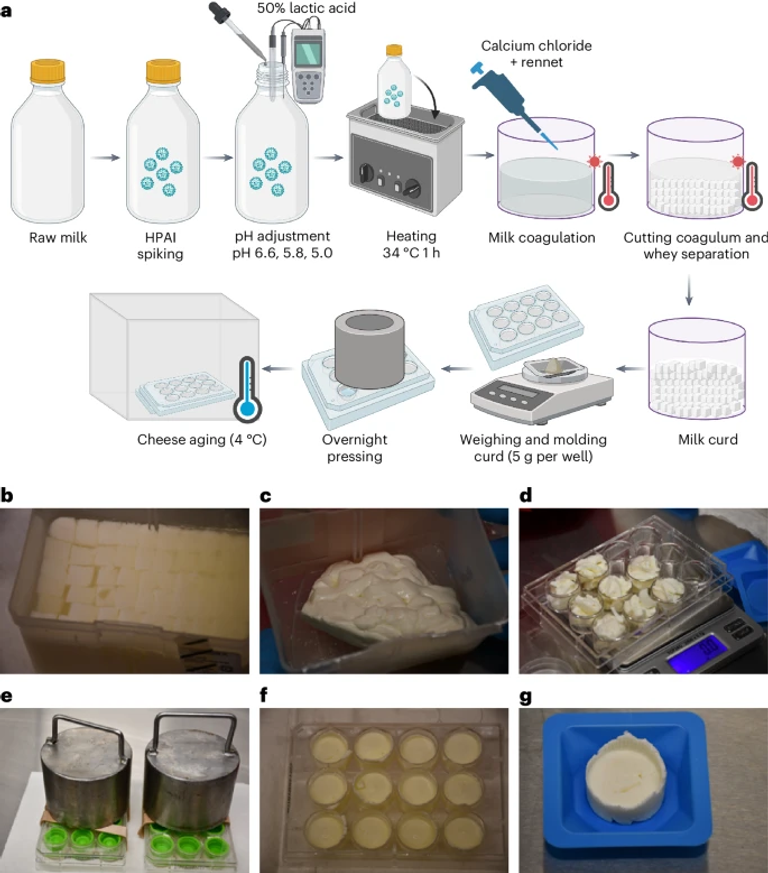ABSTRACT
Highly pathogenic avian influenza H5N1 viruses have recently spread to dairy cattle, with high levels of virus detected in milk from affected animals, raising concern about the risk posed by unpasteurized dairy products consumed by humans. Here we evaluated H5N1 virus persistence in raw-milk cheeses (n = 3 per condition) made with milk acidified to pH 6.6, 5.8 and 5.0 before cheese making and validated our findings in raw-milk cheeses (n = 4) inadvertently produced with naturally contaminated raw milk. The pH values tested (6.6, 5.8 and 5.0) reflect the pH range encountered in raw-milk cheeses at the marketplace. We observed pH-dependent virus survival, with infectious virus persisting through the cheese-making process and up to 120 days of aging in cheeses made with raw milk at pH levels of 6.6 and 5.8, whereas at pH 5.0, the virus did not survive the cheese-making process. Notably, while ferrets (Mustela furo) fed H5N1 virus-contaminated raw milk (n = 4) became infected, those fed raw-milk cheese (n = 4) or cheese suspension (n = 4) did not. These results demonstrate that the H5N1 virus can remain infectious for extended periods in raw-milk cheeses under specific conditions, underscoring the potential public health risks associated with consuming raw-milk cheese produced from contaminated milk and highlighting the need for additional mitigation measures in cheese production to prevent human exposure to the virus.
